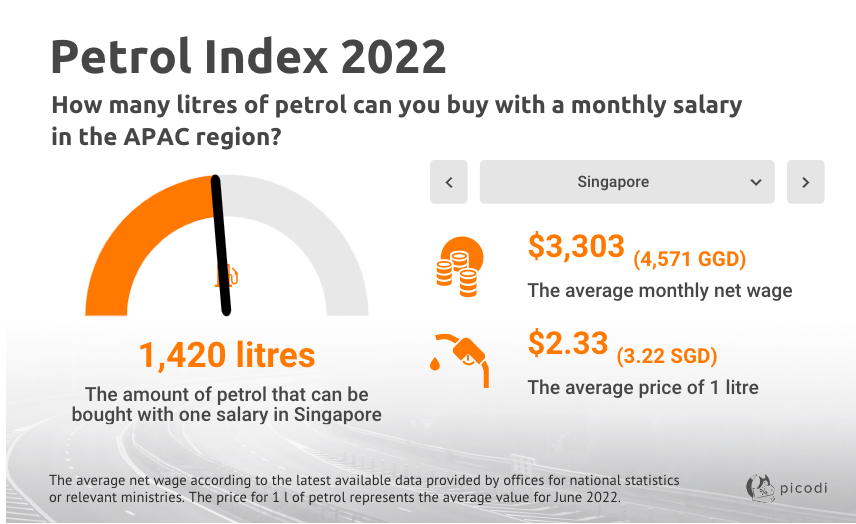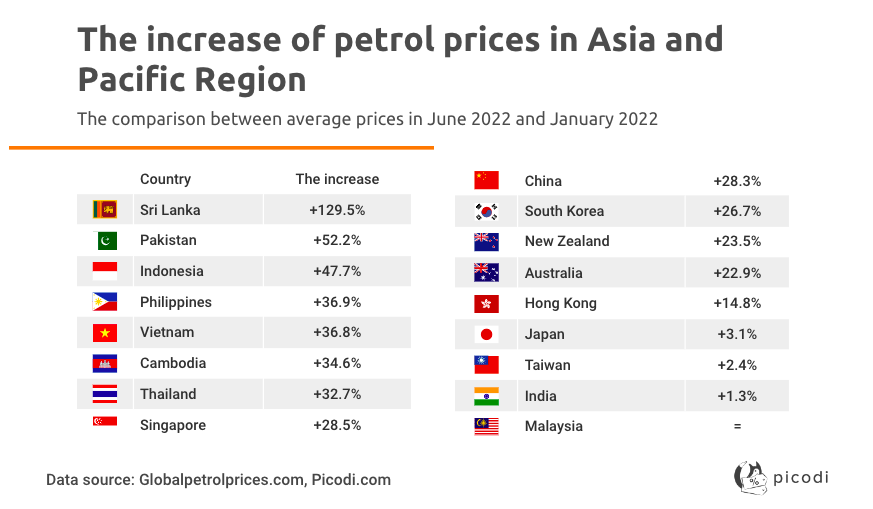A new study has shown that this year, Singaporeans can buy 617 fewer liters of petrol than last year, based on the average wage, due to the increase in fuel prices.
Picodi.com‘s newest edition of the annual ‘Petrol Index’ report took a look the difference in petrol prices around the world and calculated how many liters of fuel may be purchased with an average wage in 102 countries.

The company’s Petrol Index 2022 shows that this year, on an average salary, Singaporeans could afford 1,420 litres of petrol.
Last year, it was 2,037 litres.
And while this is a pretty large difference from any perspective, it’s also good to see where Singapore is at in comparison to other countries in Asia.
The study also shows that in contrast, Malaysia experienced no price increases for petrol so far this year.
In Sri Lanka, on the other hand, fuel prices have more than doubled, having increased by 129.5 per cent.

Rounding out the top five Asia Pacific countries with the highest uptick in fuel prices are Pakistan (52.2 per cent), Indonesia (47.7 per cent), the Philippines (36.9 per cent), and Vietnam (36.8 per cent).
Singapore ranks eighth on the list with a 28.5 per cent increase in petrol prices.
Meanwhile, Japan, Taiwan and India have seen low increases in fuel prices, at 3.1 per cent, 2.4 per cent, and 1.3 per cent respectively.
Shockingly, the price of fuel in Hong Kong, which was USD 3 per litre (approximately S$4.16) when the report was published, is the highest not only in the Asia-Pacific region but all over the world.
Singapore ranks second at USD 2.33 per litre (approximately S$4.16).
As for how much petrol a monthly average wage can buy, Singapore may not be doing too badly.
In comparison, Australians can afford 2,917 litres of petrol, while the Japanese can buy 1,580 litres. New Zealanders and Koreans on an average salary can afford 1,446 litres, and 1,367 litres of petrol, respectively.
The price of fuel has risen primarily due to Russia’s attack on Ukraine last February, but crude oil prices had been going up even prior to the invasion.
“The underlying problem is a shortage of oil and of refineries that produce gasoline,” says Kelly Hewitt, a principal energy specialist at Asian Development Bank, adding that crude oil prices have jumped from just over USD70 (approximately S$97.14) to over USD100 (approximately S$138.8) per barrel since September of last year.
/TISG
‘Hopefully, petrol prices will reduce’ — Drivers affected by Singapore’s petrol price hikes struggle

